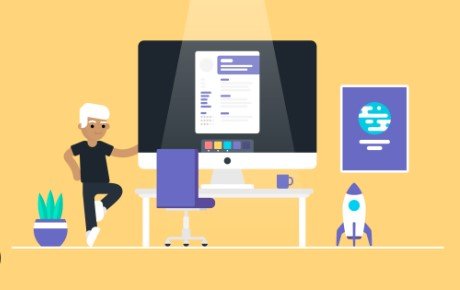Mastering the Craft: A Guide to Effective Graphic Design Training
Graphic design plays a crucial role in modern communication. It’s the art of combining images, text, and ideas to convey messages effectively. Whether you’re designing a logo, a website, or an advertisement, good design can make a significant impact. But how do you become proficient in this creative field? This blog explores the essential steps to effective graphic design training, offering insights into the skills, tools, and strategies needed to succeed.

Understanding the Basics
Before diving into the world of graphic design, it’s important to understand the basics. Design principles like balance, contrast, alignment, repetition, and hierarchy are fundamental. These principles guide how elements are arranged in a design, ensuring it’s visually appealing and easy to understand. Grasping these basics is the first step in your training.
Learning the Tools
Graphic designers rely on various tools to bring their ideas to life. Software like Adobe Photoshop, Illustrator, and InDesign are industry standards. Photoshop is used for editing photos and creating digital artwork. Illustrator is ideal for creating vector graphics, such as logos and icons. InDesign is perfect for layout design, especially for print media like brochures and magazines.
Becoming proficient in these tools takes time and practice. Online tutorials, courses, and hands-on projects are excellent ways to learn. Familiarize yourself with the interfaces, experiment with different functions, and don’t be afraid to make mistakes. The more you practice, the more confident you’ll become.
Developing Your Style
Every designer has a unique style. Developing your style is an important part of your training. Study the work of other designers, both past and present. Analyze what you like and don’t like about their designs. Over time, you’ll start to see patterns in your preferences, which will help you develop your own style.
Experimentation is key to finding your voice as a designer. Try different techniques, play with color schemes, and explore various design trends. Don’t limit yourself to one approach. The more you explore, the more versatile you’ll become.
Building a Portfolio
A portfolio is essential for any graphic designer. It’s a collection of your best work, showcasing your skills and style. A strong portfolio can open doors to job opportunities, freelance gigs, and collaborations.
Start building your portfolio early in your training. Include a variety of projects that demonstrate your range, from logo design to digital illustrations and print layouts. Quality is more important than quantity. Focus on presenting your best work, even if it means having fewer pieces in your portfolio.
Gaining Real-World Experience
Training isn’t complete without real-world experience. Internships, freelance projects, and collaborations are excellent ways to gain practical experience. Working on real projects will teach you how to handle client feedback, meet deadlines, and solve design challenges.
Look for opportunities to work with small businesses, non-profits, or community organizations. These projects may not always pay well, but they provide valuable experience and help you build your portfolio. Networking with other designers and professionals in the industry can also lead to opportunities.
Staying Updated
Graphic design is a constantly evolving field. New trends, tools, and techniques emerge regularly. To stay competitive, it’s important to keep learning. Follow design blogs, attend workshops, and participate in online design communities. Engaging with the design community helps you stay informed about the latest developments and keeps your skills sharp.
Understanding the Business Side
Graphic design isn’t just about creativity; it also involves understanding the business side. If you plan to work as a freelancer or start your own design studio, you’ll need to learn about pricing, contracts, and client management. Understanding how to market your services and build a client base is crucial for success.
Many designers find it helpful to take courses or read books on business for creatives. Learning how to navigate the business aspects of design ensures that you can turn your passion into a sustainable career.
Importance of Feedback
Feedback is a valuable part of the training process. Whether it’s from instructors, peers, or clients, constructive criticism helps you grow as a designer. It’s important to approach feedback with an open mind and a willingness to improve.
Seek feedback regularly and learn from it. Don’t take criticism personally; instead, use it as an opportunity to refine your skills and enhance your designs. The ability to accept and apply feedback is a crucial skill for any successful designer.
Finding Inspiration
Inspiration fuels creativity. As a designer, you need to constantly seek inspiration to keep your work fresh and innovative. Inspiration can come from anywhere—nature, art, architecture, fashion, or even everyday objects.
Create a habit of collecting inspiration. Use platforms like Pinterest or Behance to curate designs that resonate with you. Keep a sketchbook or digital file where you can jot down ideas or sketch concepts. Regularly exposing yourself to new ideas and experiences will keep your creativity flowing.
Conclusion
Graphic design training is a journey of continuous learning and growth. By understanding design principles, mastering the tools, developing your style, and gaining real-world experience, you can build a successful career in this dynamic field. Stay curious, keep experimenting, and never stop seeking inspiration. With dedication and passion, you’ll master the craft of graphic design and make your mark in the industry.



